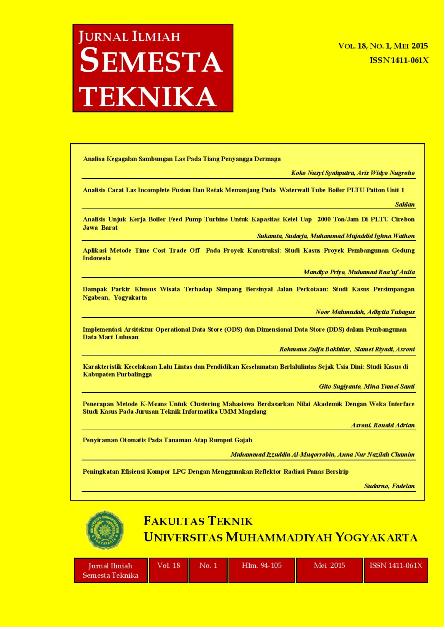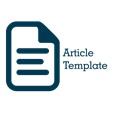Penerapan Metode K-Means Untuk Clustering Mahasiswa Berdasarkan Nilai Akademik Dengan Weka Interface Studi Kasus Pada Jurusan Teknik Informatika UMM Magelang
DOI:
https://doi.org/10.18196/st.v18i1.708Keywords:
Clustering, K-Means, AlgorithmAbstract
The selection process among outstanding students in a department has a big problem. This process is not fair because only involve one criteria and ignore the other criteria. We need the best student to participate in a competition held by the Indonesia Security Incident Response Team on Internet Infrastructure (ID SIRTII) of the Ministry of Communication and Information. This process uses Weka software to calculate the best student. It provides the various method to explore the data. One of them is clustering method. There are many algorithms in clustering method. In this research, we will investigate widely about one of that algorithms. Its name is K-Means. This algorithm (K-Means) will give the recommendations about the best student based on the cluster. It will represent the many clusters of a student group. The best cluster can be calculated more to get the names of the best students group. They are eligible to enter the competition. K-means involve the GPA (Grade Point Average) and related course to support the academic skill in order to get the best student. This research helps the teacher select the best student to enter the competition. Many similar cases can use this algorithm in order to get the best student.
Downloads
Published
How to Cite
Issue
Section
License
Semesta Teknika is licensed under a Creative Commons Attribution 4.0 International License.
Authors who publish with this journal agree to the following terms:
- Authors retain copyright and grant the journal right of first publication with the work simultaneously licensed under a Creative Commons Attribution License that allows others to share the work with an acknowledgement of the work's authorship and initial publication in this journal.
- Authors are able to enter into separate, additional contractual arrangements for the non-exclusive distribution of the journal's published version of the work (e.g., post it to an institutional repository or publish it in a book), with an acknowledgement of its initial publication in this journal.
- Authors are permitted and encouraged to post their work online (e.g., in institutional repositories or on their website) prior to and during the submission process, as it can lead to productive exchanges, as well as earlier and greater citation of published work (See The Effect of Open Access).









